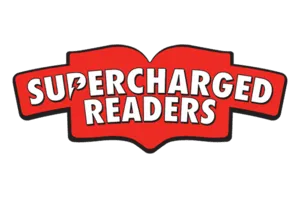Learning To Read Is Arguably the Most Important Work A Child Will Do. Give Them the Gear They Need to Succeed.

We have a gallant and gorgeous Labrador puppy, almost a year old now as I write this post. When speaking of Sage, we like to say, “She’s such a good girl…Except when she’s not.”
Learning to read is like that. It’s easy, except when it’s not. For some children, it seems to be a walk in the park, while for others it can feel like an exhausting trudge in the dark. Through a thicket. Uphill. But even so, it can be done, with proper instruction.
Give learners a map, a walking stick, and a flashlight. Shine a light on the phonetic patterns within words. Add in oral language, vocabulary, and word analysis via morphology. Keep the lessons short, engaging, explicit, and sequentially ordered. Plan carefully to illuminate the linguistic formations. Provide plenty of encouragement along the way. Keep the tone uplifting. Provide for multisensory and hands-on learning. Slowly build mental stamina for the cognitive task. Align lessons with the child’s understanding. Evidence-aligned instructional practices and methods are planned through careful analysis of current performance data, including diagnostic evidence. Monitoring and tracking student progress is essential to lesson planning and to building motivation for the climb.
Reading is difficult for many children, as indeed it should be. The act of reading requires multifaceted thought wherein one must simultaneously consider the various components of language while drawing upon several sections across the brain—there is no single “reading lobe” for literacy. In processing print, speech sounds, and meaning, we must mentally walk and chew gum. For many children, it is intensely laborious work, at least at first. Thus, it is imperative educators draw upon scientifically based reading research to employ best practices and methods. The exhaustive Report of the National Reading Panel (2000) and more recently The Science of Reading: Defining Guide (The Reading League [TRL], 2022) are good places to start, along with the International Dyslexia Association®. (See links below.)
A Structured Literacy approach to reading instruction will shine some light on the complex task of learning to read, and of teaching children how to read. This systematic and explicit approach will illuminate language in terms of phonology, orthography, morphology, semantics/vocabulary, and syntax. There will be explicit instruction, with teachers modeling precisely “how to” access these language components in the written word. Indeed, explicit instruction benefits students at risk of reading frustration, including children of low-income backgrounds and English learners (see below, Denton et al., 2010)
Children need to know letters and sounds. Sound-symbol relationships are essential. Especially in a complicated alphabetic language like English, the alphabetic principle is a golden key. Orthographic mapping can be quite challenging, especially for children with phonological processing difficulties, including dyslexia. Struggling readers must be given the keys to the language, learning phonics, learning to blend discrete sounds together into words (decoding, reading) and segment spoken words apart into separate letter sounds (encoding, spelling). This includes lessons in sound-symbol association and eventually in syllable recognition and in word analysis via morphemes (prefixes, suffixes, roots and bases, accessed in word creation, the study of morphology). See Foorman et al, 2016, below).
If a child continues to struggle with the phonology of language, if sounding out words remains laborious and fluency a distant horizon, extra lessons in morphology have been shown to boost word recognition. Teachers will gradually provide instruction to develop morphological awareness. Morphology addresses the formation of words, and this line of study provides yet another avenue for word recognition, to say nothing of vocabulary development. Learning to see meaningful units within words allows children to embrace morphological families of words, recognizing similarities in meaning and form, such as in box, box-top, unboxing, toy box, breadbox, sandbox, lunchbox, icebox, etc. Or, more advanced morphological families such as pain, painful, painless, painfully, painlessly…act, action, active, actively, react, reaction, reactionary.
Connected text is another key, along with fluency development. Some researchers (i.e, Foorman et al, 2016) recommend providing phonics-based decodable texts to emerging readers. A decodable reader is designed to offer opportunities for successful reading practice within a story context while working with limited linguistic patterns and limited sight words, specifically taught in advance of the book. The Reading League resources include a vetted list of decodable readers. Some decodable readers, including my own series (Ebbers 2024), are designed to boost reading via phonics practice while also boosting morphology and vocabulary. A series of such decodables contains stories that gradually build in length and complexity. Eventually, hopefully, children are fluently reading more authentic, natural texts. With hard work and persistence over time, they increasingly experience success.
Success can ignite interest and motivation. Frequently, interest in any endeavor grows as success grows. Success and interest have a noteworthy relationship. Repeated failure is known to bring about a lack of interest, an absence of motivation. Motivation is increasingly important when the task is quite difficult, and the challenge seems never ending and long term.
Learning to read is arguably the most important work a child will do. It’s a watershed uphill journey. Give them all the gear they will need to succeed. On February 22, I am honored to be the guest on EDVIEW360’s podcast, where I will discuss this topic and how to provide students with the best opportunities for success. You can listen to the podcast here. I hope you will join me.
Listen to the Podcast Learn more about Decodable Readers
Links to Suggested Readings:
Denton, C. A., Nimon, K., Mathes, P. G., Swanson, E. A., Kethley, C., Kurz, T. B., & Shih, M. (2010). Effectiveness of a supplemental early reading intervention scaled up in multiple schools. Exceptional Children, 76, 394–416. doi:10.1177/001440291007600402 https://journals.sagepub.com/doi/10.1177/001440291007600402
Foorman, B., Beyler, N., Borradaile, K., Coyne, M., Denton, C. A., Dimino, J., Furgeson, J., Hayes, L.,Henke, J., Justice, L., Keating, B., Lewis, W., Sattar, S., Streke, A., Wagner, R., & Wissel, S. (2016). Foundational skills to support reading for understanding in kindergarten through 3rd grade (NCEE 2016-4008). Washington, DC: National Center for Education Evaluation and Regional Assistance (NCEE), Institute of Education Sciences, U.S. Department of Education. Retrieved from the NCEE website: http://whatworks.ed.gov. https://ies.ed.gov/ncee/wwc/Docs/practiceGuide/wwc_foundationalreading_040717.pdf
International Dyslexia Association: https://dyslexiaida.org
The Reading League. (2024, January 8). Science of Reading: Defining Guide. https://www.thereadingleague.org/what-is-the-science-of-reading/defining-guide-ebook/
The Reading League Decodable Readers Source:
https://www.thereadingleague.org/decodable-text-sources/


